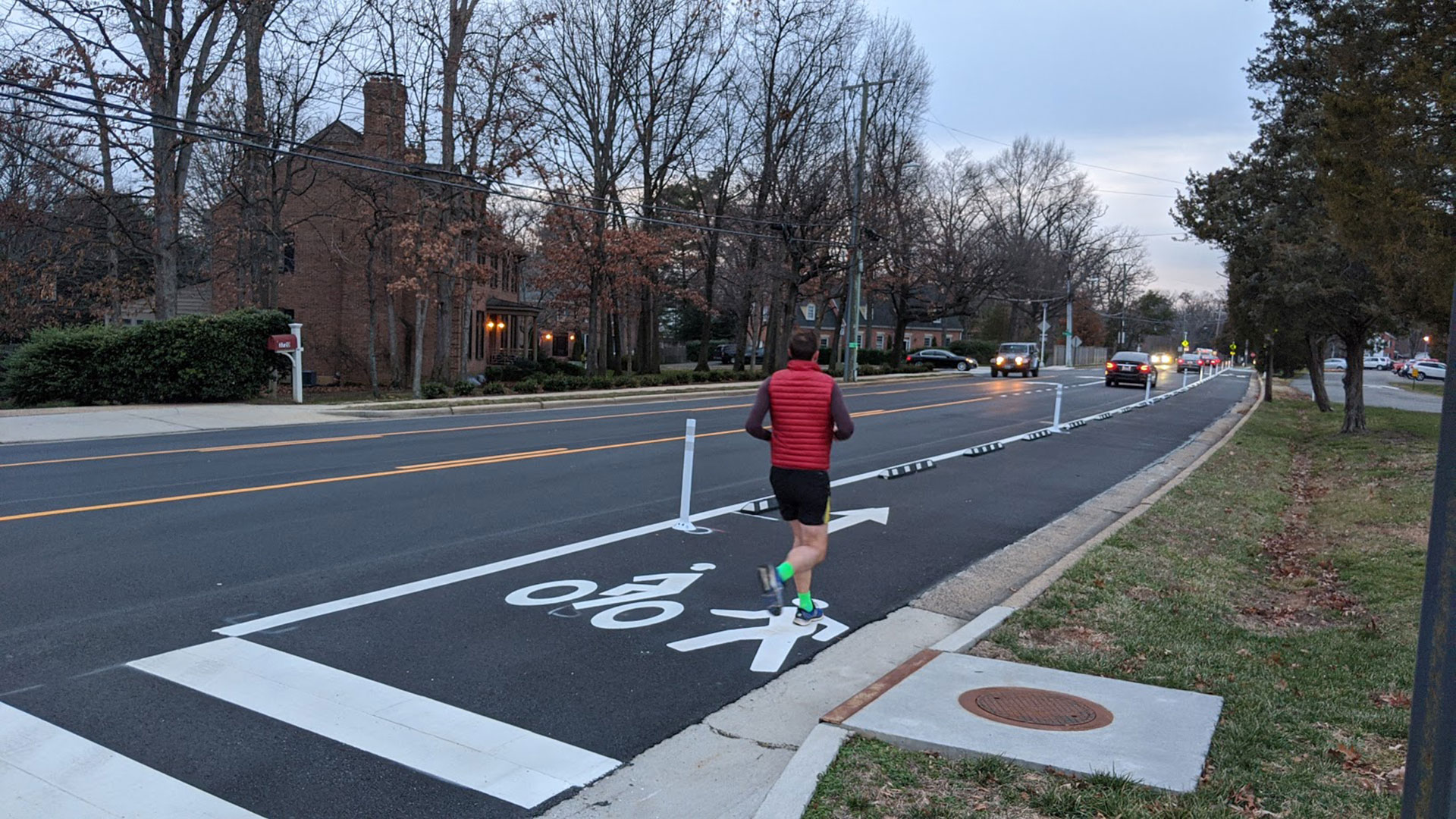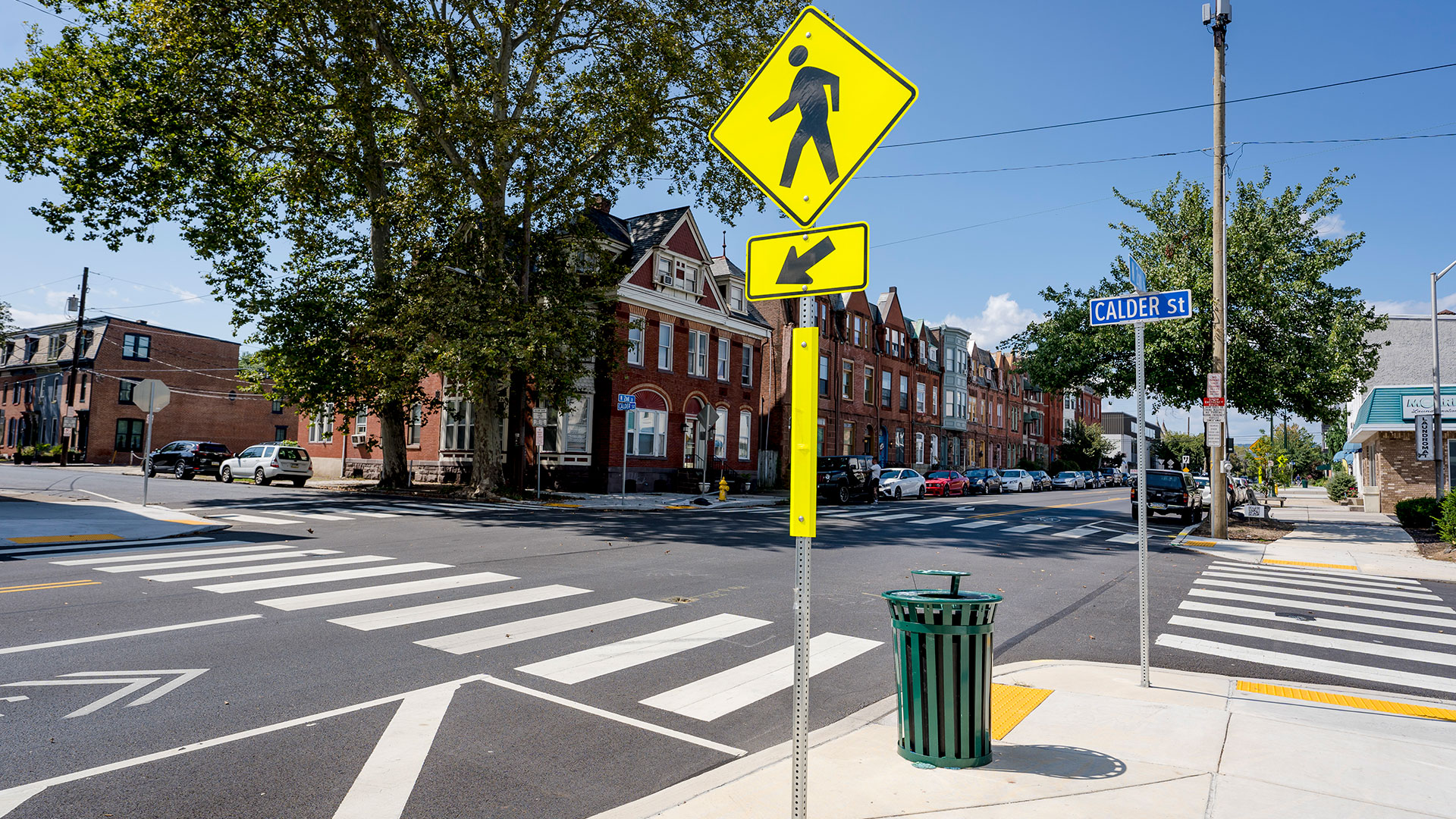January 29, 2024
“Removing a vehicle travel lane will increase cut-through traffic through the surrounding neighborhood, because the street will get congested and cars will be incentivized to divert through the neighborhood.” This is a commonly-expressed concern when road diets or cross-section reallocations are in consideration, and it’s an understandable concern—but it turns out, that often doesn’t happen.
Arterial and collector roadways across the United States have historically been designed with a focus on accommodating automobiles, anticipating future growth, and addressing commuter peak-hour congestion. This approach has often led to a roadway that’s prioritized for cars, leading to conflicts between other modes that can lead to safety issues, as well as inefficient use of space during peak travel times.
Many roadways have benefitted from reallocating roadway space for other modes by reducing the number of vehicular lanes. These reallocations result in comparable daily traffic volumes and delay before and after the road diet, a surprising outcome to many roadway users. Here are a few examples:
- Seminary Road is a key corridor in the City of Alexandria, Virginia. In September 2019, as the road was being repaved, the City Council voted to redesign it to include one travel lane in each direction, a center turn lane, new crossings, and bicycle lanes. The Seminary Road Project Evaluation Report shows that traffic volumes, travel times, and crashes decreased; road users travel at lower speeds; and traffic was not observed diverting to neighborhood streets. Learn more about this project here.
- In Hennepin County, Minnesota, a portion of Washington Avenue was reduced from six through lanes to four, with the extra space repurposed into protected bike lanes and a landscaped buffer. In addition to pedestrian activity increasing by 163% and bicyclist activity increasing by 185%, travel time for cars decreased along the corridor, with a 47% decrease in vehicle emissions and 1.07 fewer crashes per million vehicle miles.
- In Fort Lauderdale, Florida, Powerline Road was reallocated from six lanes to four lanes with buffered bike lanes. Results include increased bicyclist activity, minimal to no change in travel times, and increased economic activity, without increasing traffic on adjacent roads.

Traffic volumes, travel times, and crashes decreased after Seminary Road was redesigned to one travel lane in each direction.
NCHRP Research Report 1036, Roadway Cross-Section Reallocation: A Guide, cites ten case studies from roadway reallocation projects around the country. The results of these projects demonstrate safety benefits for all roadway users (especially people walking and biking) and minimal changes to vehicle travel times. Notably, the report states that “case studies did not find substantial evidence of vehicle diversion from reallocation streets to parallel streets.”
We have seen similar outcomes in our work; it’s rare that we come across an example of “cut-through” traffic from the removal of a travel lane negatively impacting the livability of an adjacent residential neighborhood. However, we recognize that each roadway environment is unique, and context-sensitive analysis provides the decision-making basis for a particular road.
How is it possible that a roadway could see comparable daily traffic volumes and delay after removing a travel lane? In some cases, the effective roadway capacity remains the same and in others, users are likely to adjust their trip to avoid the peak congestion. At signalized intersections, pedestrians have fewer lanes to cross and thus the signal length is reduced, which balances things out by reducing the delay for drivers. Additionally, the provision of increased safety treatments and comfortable facilities for walking and biking gives people an alternative to driving their cars. Here, the word reallocation rings true regarding not just street space, but also mode share (bicycle, pedestrian, and transit).

Does Removing a Travel Lane Increase Cut-Through Traffic?
It’s certainly possible that the removal of travel lanes could degrade traffic operations in some contexts. The premise of NCHRP’s Roadway Cross-Section Reallocation: A Guide is that every design decision comes down to tradeoffs. If safety is truly the highest priority, then delays for people driving should be considered an acceptable tradeoff for improving conditions that are dangerous to people on foot and bike. Ultimately, each project has specific context and needs and is evaluated prior to implementation. The goal is to identify facilities where the benefit of providing comfortable, low-stress facilities for people walking and biking improves a corridor’s livability, outweighing the potential increase in vehicle congestion (though as noted above, congestion usually doesn’t increase much, if at all).
Okay, but what about emergency vehicles, freight trucks, and buses? Concerns about lane reductions delaying emergency vehicles and increasing response times are common as part of proposed lane reduction efforts. However, reviews of emergency vehicle response times after lane reductions are implemented show that emergency vehicle response times are typically improved.
As FHWA puts it, “multi-lane undivided roads can be awkward and unsafe for emergency responders, and can slow response times. Drivers are often uncertain about where to go to allow emergency responders to pass.” Center turn lanes and wide shoulders are more predictable paths for emergency vehicles to move quickly. The extra space gained from removing travel lanes can also be put toward delivery parking areas, protected bus pullouts, and wider shoulders, all of which help large vehicles like buses and trucks. Learn more from this fact sheet from FHWA and this video from Vox.
